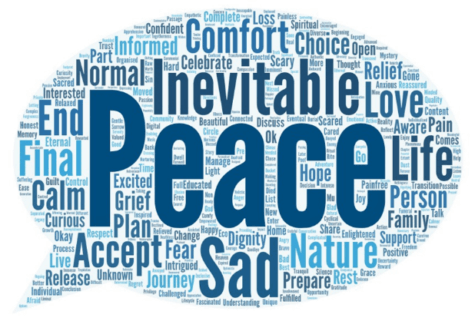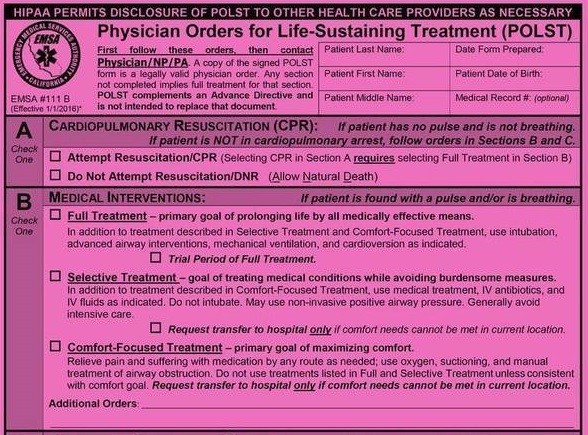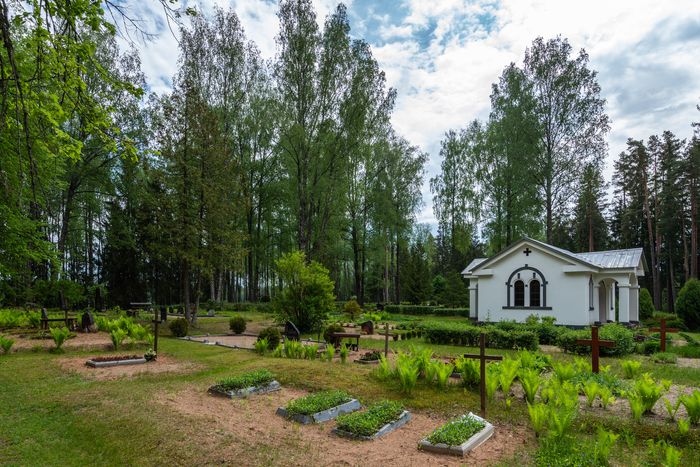
By George Yancy
Just a few days before my father died in 2014, I asked him a question some might find insensitive or inappropriate:
“So, what are your thoughts now about dying?”
We were in the hospital. My father had not spoken much at all that day. He was under the influence of painkillers and had begun the active stage of dying.
He mustered all of his energy to give me his answer. “It’s too complex,” he said.
They were his final spoken words to me before he died. I had anticipated something more pensive, something more drawn-out. But they were consistent with our mutual grappling with the meaning of death. Until the very end, he spoke with honesty, courage and wisdom.
I have known many who have taken the mystery out of death through a kind of sociological matter-of-factness: “We all will die at some point. Tell me something I don’t know.” I suspect that many of these same people have also taken the mystery out of being alive, out of the fact that we exist: “But of course I exist; I’m right here, aren’t I?”
Confronting the reality of death and trying to understand its uncanny nature is part of what I do as a philosopher and as a human being. My father, while not a professional philosopher, loved wisdom and had the gift of gab. Our many conversations over the years touched on the existence of God, the meaning of love and, yes, the fact of death.
In retrospect, my father and I refused to allow death to have the final word without first, metaphorically, staring it in the face. We were both rebelling against the ways in which so many hide from facing the fact that consciousness, as we know it, will stop — poof!
We know the fact of death is inescapable, and it has been especially so for the nearly two-year pandemic. As we begin another year, I am astonished again and again to realize that more than 800,000 irreplaceable people have died from Covid-19 in the United States; worldwide, the number is over five million. When we hear about those numbers, it is important that we become attuned to actual deaths, the cessation of millions of consciousnesses, stopped just like that. This is not just about how people have died but also that they have died.
My father and I, like the philosopher Soren Kierkegaard, came to view death as “by no means something in general.” We understood that death is about me, him and you. But what we in fact were learning about was dying, not death. Dying is a process; we get to count the days, but for me to die, there is no conscious self who recognizes that I’m gone or that I was even here. So, yes, death, as my father put it, is too complex.
It was in February of 2020 that I wrote the introduction to a series of interviews that I would subsequently conduct for The Times’s philosophy series The Stone, called Conversations on Death, with religious scholars from a variety of faiths. While my initial aim had little to do with grappling with the deaths caused by Covid-19 (like most, I had no idea just how devastating the virus would be), it soon became hard to ignore. As the interviews appeared, I heard from readers who said that reading them helped them cope with their losses during the pandemic. I would like to think that it was partly the probing of the meaning of death, the refusal to look away, that was helpful. What had begun as a philosophical inquiry became a balm for some.
While each scholar articulated a different interpretation of what happens after we die, it was not long before our conversations on death turned to matters of life, on the importance of what we do on this side of the grave. Death is loss, each scholar seemed to say, but it also illuminates and transforms life and serves as a guide for the living.
The Buddhist scholar Dadul Namgyal stressed the importance of letting go of habits of self-obsession and attitudes of self-importance. Moulie Vidas, a scholar of Judaism, placed more emphasis on Judaism’s intellectual and spiritual energy. Karen Teel, a Roman Catholic, emphasized her interest in working toward making our world more just. The Jainism scholar Pankaj Jain underscored that it is on this side of the veil of death that one attempts to completely purify the soul through absolute nonviolence. Brook Ziporyn, a scholar of Taoism, stressed the importance of embracing this life as constant change, being able to let go, of allowing, as he says, every new situation to “deliver to us its own new form as a new good.” Leor Halevi, a historian of Islam, told me that an imam would stress the importance of paying debts, giving to charity and prayer. And Jacob Kehinde Olupona, a scholar of the Yoruba religion, explained that “humans are enjoined to do well in life so that when death eventually comes, one can be remembered for one’s good deeds.” The atheist philosopher Todd May placed importance on seeking to live our lives along two paths simultaneously — both looking forward and living fully in the present.
The sheer variety of these religious insights raised the possibility that there are no absolute answers — the questions are “too complex”— and that life, as William Shakespeare’s Macbeth says, is “a tale told by an idiot, full of sound and fury, signifying nothing.” Yet there is so much to learn, paradoxically, about what is unknowable.
Perhaps we should think of death in terms of the parable of the blind men and the elephant. Just as the blind men who come to know the elephant by touching only certain parts of it, our views of death, religious or not, are limited, marked by context, culture, explicit and implicit metaphysical sensibilities, values and vocabularies. The elephant evades full description. But with death, there doesn’t seem to be anything to touch. There is just the fact that we die.
Yet as human beings, we yearn to make sense of that about which we may not be able to capture in full. In this case, perhaps each religious worldview touches something or is touched by something beyond the grave, something that is beyond our descriptive limits.
Perhaps, for me, it is just too hard to let go, and so I refuse to accept that there is nothing after death. This attachment, which can function as a form of refusal, is familiar to all of us. The recent death of my dear friend bell hooks painfully demonstrates this. Why would I want to let go of our wonderful and caring relationship and our stimulating and witty conversations? I’m reminded, though, that my father’s last words regarding the meaning of death being too complex leave me facing a beautiful question mark.
My father was also a lover of Kahlil Gibran’s “The Prophet.” He would quote sections from it verbatim. I wasn’t there when my father stopped breathing, but I wish that I could have spoken these lines by Gibran as he left us: “And what is it to cease breathing, but to free the breath from its restless tides, that it may rise and expand and seek God unencumbered?”
In this past year of profound loss and grief, it is hard to find comfort. No matter how many philosophers or theologians seek the answers, the meaning of death remains a mystery. And yet silence in the face of this mystery is not an option for me, as it wasn’t for my father, perhaps because we know that, while we may find solace in our rituals, it is also in the seeking that we must persist.
Complete Article ↪HERE↩!







